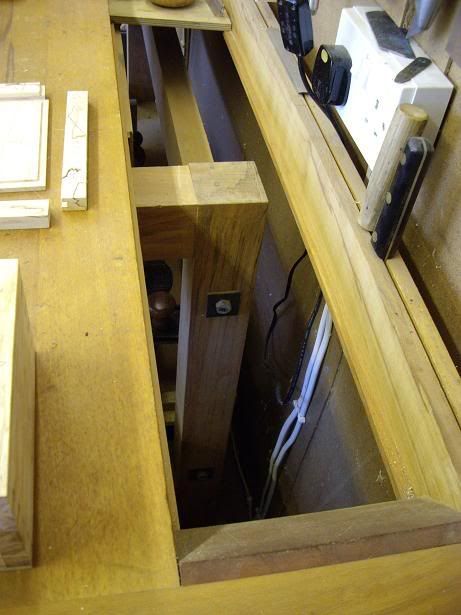If I could just tip in my two controversial euro's worth as per normal :roll:, I've had a look at those linky's to the bench with the split top thingie and both vices at one end, very clever...
However, in my view there are just two prerequisites for a decent bench, whichever way you slice it and whatever way you arrange the top (which is down to personal preference at the end of the jour)
The first is that it should be as heavy as possible (if you have a No1 son John, to help lug it around, so much the better) and secondly:
it should be rock solid (absolutely no racking) when you're belting something on it or planing a bit of wood. In most designs that I've seen, the absence of racking is because the top is bolted directly to the frame, but in my bench I've gone for the belt and braces approach by including a
third draw-bolted rail at the top of the frame, which can be seen in the pic through the removable Charlesworthian bench well inserts (well worth doing as you can get access for cramping from both sides of the top)
The material on my bench is 3" thick solid beech throughout...there's no thinner bit in the middle with just a skimpy front apron to make it look thicker than it is.
Plenty of forum members have used the bench on various occasions and it
does move in use...but it's not the bench, it's the floor

(soon to be rectified)
Going to crawl back under me rock now

- Rob







